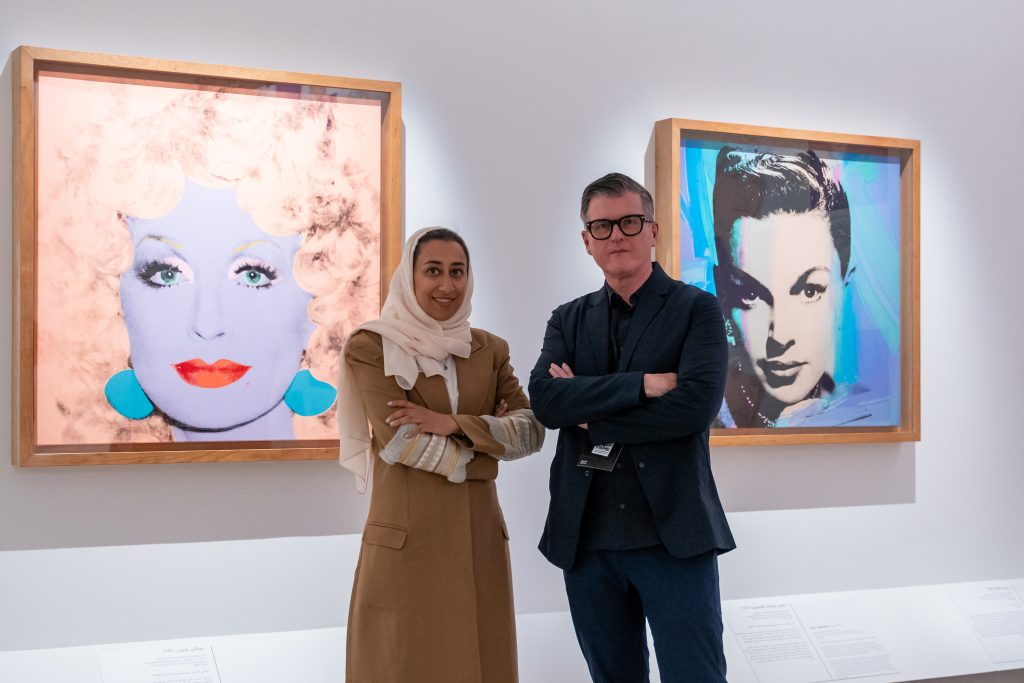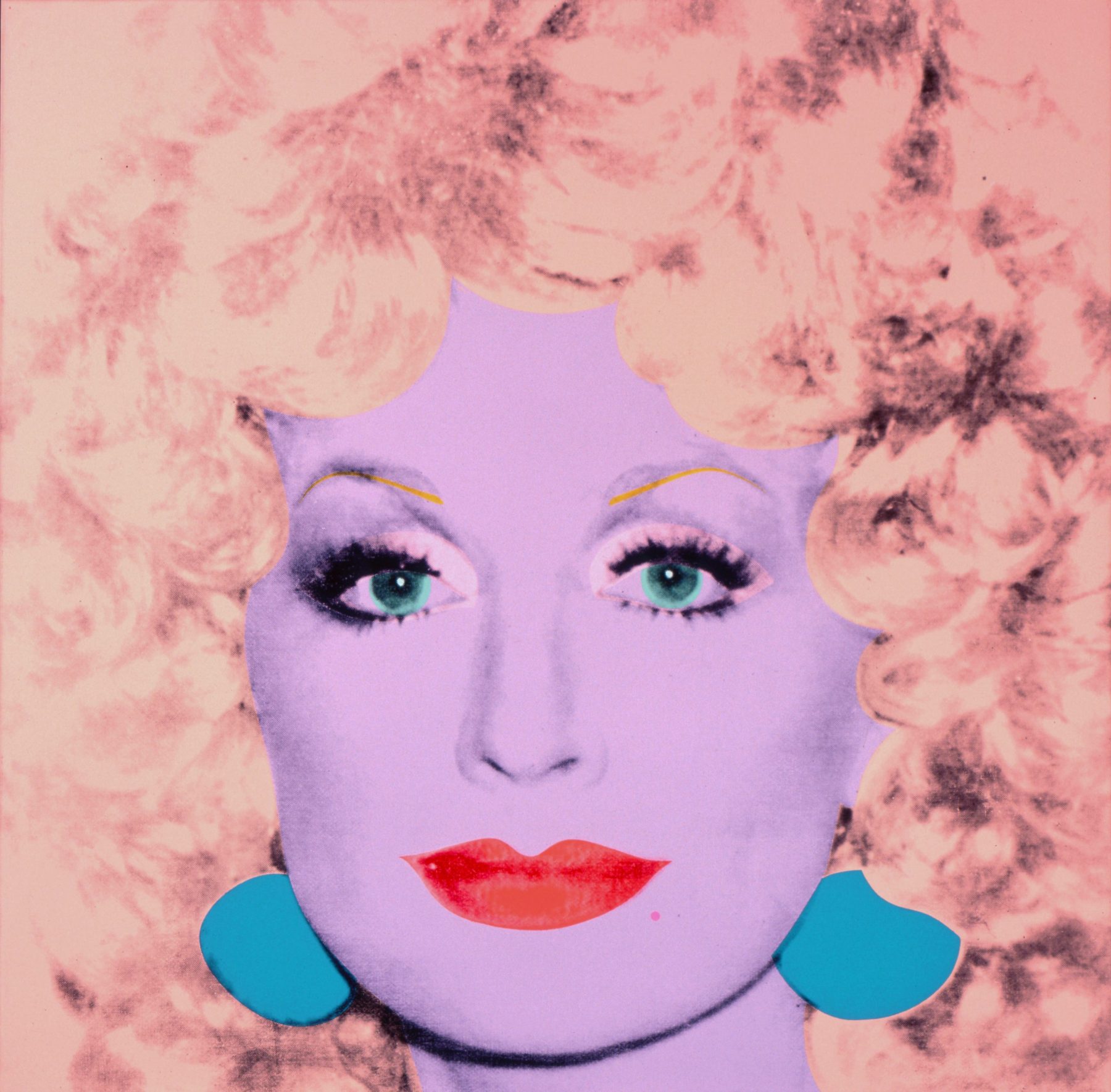Opinion
I Organized the Big Andy Warhol Show in Saudi Arabia. Here’s Why I Have No Regrets
The director of The Andy Warhol Museum on beginning a dialogue in a country on the verge of social change.

The director of The Andy Warhol Museum on beginning a dialogue in a country on the verge of social change.

Patrick Moore

Patrick Moore is the director of The Andy Warhol Museum and vice president of The Carnegie Museums of Pittsburgh.
In December of 2021, I found myself in an unexpected setting; driving through the desert outside of Riyadh toward an electronic music festival called MDLBeast Soundstorm. Emerging from a traffic jam, I found myself in the midst of hundreds of thousands of young Saudi men and women mostly dressed as though they were ready for Coachella or any other large American music festival. I knew in that moment that some of my pre-conceptions of Saudi Arabia had been wrong.
I was invited to the country in 2021 by Arts AlUla to consider organizing an Andy Warhol exhibition as the director of The Andy Warhol Museum. The site for the exhibition would be an extraordinary location called AlUla in the northwestern part of the country, home to a UNESCO world heritage site called Hegra, dominated by towering rock formations into which ancient tombs are carved. In juxtaposition with these archaeological treasures, Arts AlUla is also producing contemporary art projects with the intention of developing job skills and economic opportunities for youth as the area develops a modern creative economy.
The work happening in AlUla is part of the country’s Vision 2030 initiative, intended to transition the oil-dependent Saudi economy to other new employment opportunities in the cultural and entertainment sectors. The excitement around a new, more open Saudi society is now palpable on the ground and clearly, in a country where 60 percent of the population is younger than 35, there will continue to be change.
After visiting Saudi Arabia in person and experiencing the very genuine enthusiasm of young Saudis to engage with the museum (and Western culture in general), I did not hesitate to pursue a project. If I thought that I would face questions from the Saudis about whether Warhol was the right artist for their country, I can honestly say that not one person I spoke to in Saudi hesitated or questioned me. Having received no particular constraints in terms of the work that I selected, I moved forward with planning an exhibition now called “FAME: Andy Warhol in AlUla,” which opened on February 16. The exhibition planning and installation proceeded exactly as it would have at my museum or another American institution. In short, I made the decisions I felt were right for the show and was not questioned.
But I did wonder how to introduce a globally iconic artist to new viewers in a different culture. I have worked on other Warhol exhibitions focusing on aspects of Warhol’s biography—his identity as a gay man, his Catholic faith, and his youth in Pittsburgh as a child of immigrants—but I felt there was a better way to introduce Warhol in the context of a country with a very young population, many of whom may not be familiar with Warhol’s work. I determined that the touchpoint for a new, youthful audience would be Warhol’s enduring fascination with celebrity, beginning with the classic Hollywood stars he idolized during a childhood in a then-gritty, industrial Pittsburgh. Warhol typically rendered his celebrity portraits, ranging from Judy Garland and Marlon Brando to Mohammed Ali and Debbie Harry, in vivid colors and taken together, they could be seen as a precursor to an Instagram feed. These portraits were joined by Warhol’s iconic “screentests” from The Factory in the 1960s.

Andy Warhol, Dolly Parton (1985). The Andy Warhol Museum, Pittsburgh; Founding Collection, Contribution The Andy Warhol Foundation for the Visual Arts, Inc. 1998.1.625 ©2023 The Andy Warhol Foundation for the Visual Arts, Inc. / Licensed by DACS, London
A common thread between young people everywhere is the desire to be seen and to pursue their dreams. As a young man in Pittsburgh, Warhol gazed at the cinema’s “silver screen” in a way that Saudi youth now gaze at smartphone screens. His glittering paintings of stars and idealized self-portraits are not so very different in their intention from social media posts that dominate youth culture now. Seeing the reaction to the show and the thousands of social media posts by Saudis showing young people reacting to Warhol, I believe the thesis for the show has proven effective.
Andy Warhol continues to hold sway over both the non-profit and commercial art world so there are many opportunities to organize Warhol exhibitions, witnessed by my museum’s recent shows in Beijing, Shanghai and Kyoto. However, Saudi Arabia, particularly after experiencing the country in person, was a compelling location. For one thing, The Warhol Museum itself has embarked on a new initiative called The Pop District that trains local youth to produce digital media and has echoes of the workforce activities underway in AlUla and across Saudi culture.
I have, of course, not been deaf to criticism that I have received for working in Saudi Arabia. (Interestingly, almost all of these critics have declined to visit the country, engage with the Saudi people or see the exhibition they question.) However, that criticism has been more than offset by my actual lived experience of watching young Saudis engage with Warhol’s work in the most joyful and open of ways. Their actions and reactions are a powerful testament to the power of cultural exchange. Cultural exchange is a longstanding interest within the museum community, and it is more relevant than ever in a world filled with conflict and distrust. Art remains a direct and cathartic tool that can build bridges between people. In general, I believe one is faced with a choice regarding other cultures with different values—either isolate that culture or make efforts to find points of connection that can encourage change.
The plan to organize a Warhol exhibition in Saudi Arabia was reinforced by the quiet encouragement of other museum professionals and my discussions with people who knew Andy personally. Warhol’s nephew, Donald Warhola, vice-president of The Andy Warhol Foundation and liaison to the Andy Warhol Museum, told me “I believe that my uncle would embrace the opportunity to exhibit his art in Saudi Arabia and create dialogue on fame and celebrity, as well as bring a message of inclusivity. Likewise, I appreciate that Saudi Arabia is welcoming my uncle’s art into their cultural space, where perhaps people will want to learn more about Andy Warhol the artist, and Andy Warhol the human being.”
Having now returned from Saudi Arabia for the opening of FAME, I keep going back to my evening at MDLBeast Soundstorm. While there, two young local men ran up to me and shouted, “Can you believe this is Riyadh?” My answer was, and is, “No, I can’t.” But I do believe that with a continued commitment to discourse, education, and cultural exchange, international relations will shift for the better. As to what form those relations will take and how contemporary art will be involved, it is too early to say but the signs on the ground are positive.
Warhol himself seemed to understand the benefit of exposure to different viewpoints when he said, “When you work with people who misunderstand you, instead of getting transmissions, you get transmutations, and that’s much more interesting in the long run.”